A convenient and eco-friendly alternative to traditional toothpaste, these homemade toothpaste tablets are easy to make and can be adjusted to suit your personal taste.
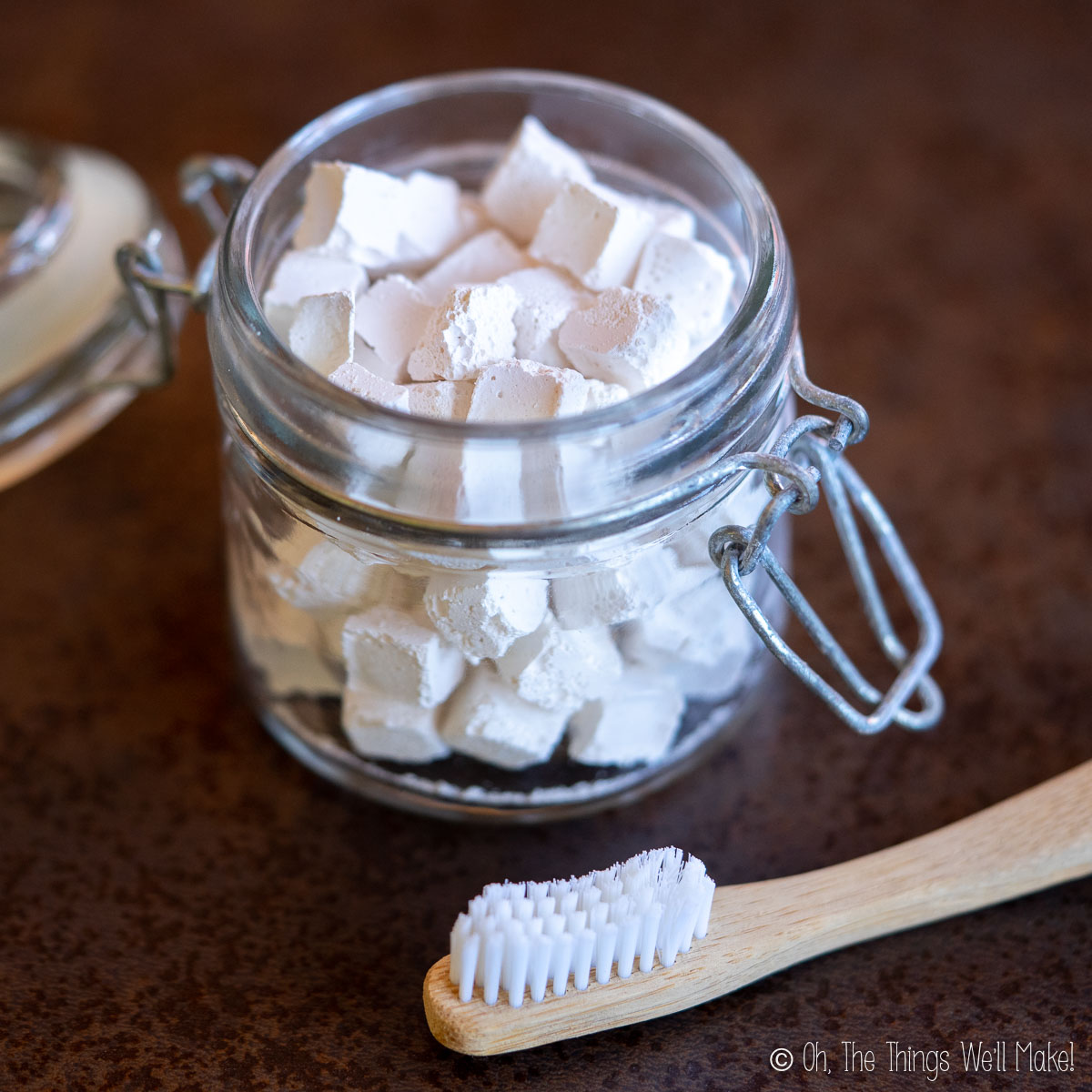
Over the years, several people have asked me to formulate something quite interesting: toothpaste tablets. They wanted a zero waste toothpaste recipe from someone who had studied dentistry (and having some knowledge in cosmetic formulation was a plus). Despite my history in dentistry, I hadn’t even heard of toothpaste tablets at the time of the first request. I hadn’t ever seen them in a store here in Spain, not even in the natural supermarkets.
Fascinated by the idea, I ordered a couple of types of toothpaste tablets online to give them a try. One had surfactants to give a bit of foaming. Another used bentonite clay and activated charcoal. Other common ingredients were baking soda and calcium carbonate. In the end, though, the ingredients were similar. After trying them both, I had a good idea of what I wanted in my DIY toothpaste tablets.
Why make toothpaste tablets?
There are several great reasons to give making toothpaste tablets a try.
Like toothpaste powder, toothpaste tablets don’t need a preservative because there is no water in them. While the tablets are made with water, it is evaporated away, leaving none in the final product. Developing a toothpaste recipe that contains water can pose a challenge in estimating its shelf life. Also, it’s unclear if there are any preservatives for home formulators that are safe for an oral care product.
Another great benefit of toothpaste tablets is that they are environmentally friendly. You can make them with reusable molds and store them in a glass jar or metal tin. This means that can keep the plastic waste from traditional toothpaste tubes out of the landfill.
Super convenient, they are light and easy to travel with. Just take as many tablets as you’ll need for your short trip!
If you’re already in love with toothpaste tablets, you’ll know that they can be a pricier alternative. By making your own, you can also save a lot of money!
Ingredients
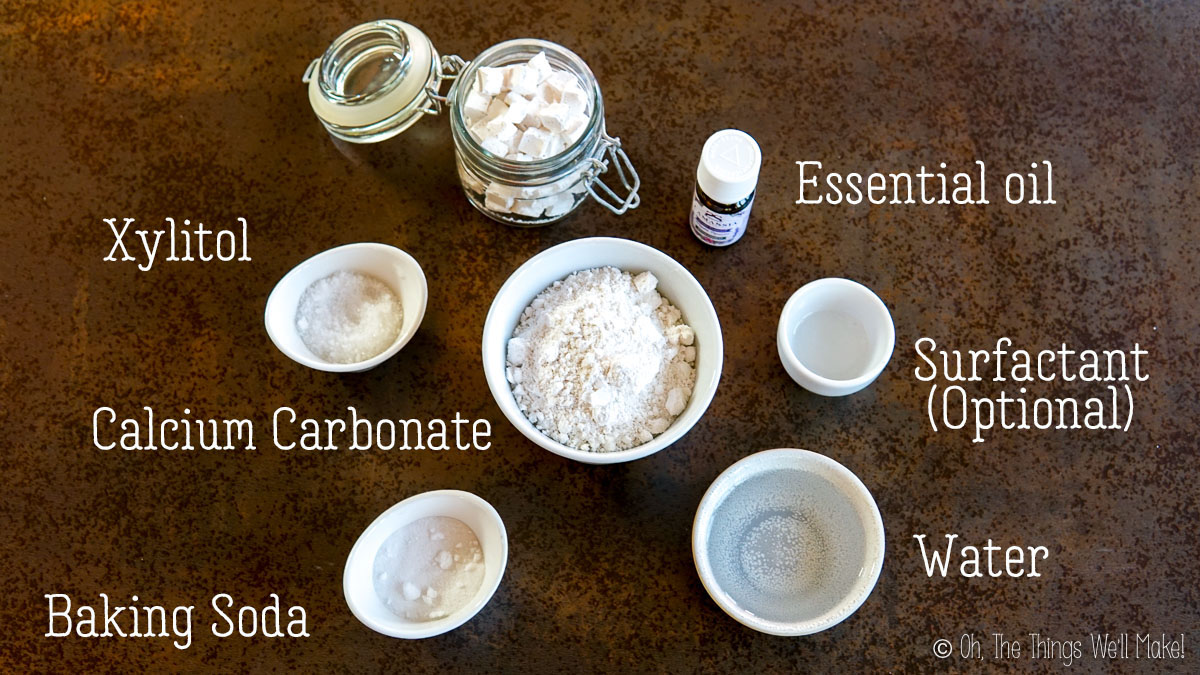
I decided to make the main base of my recipe from calcium carbonate. Calcium carbonate is great for toothpaste because it has a gentle abrasive effect that helps get rid of plaque and stains on teeth. Additionally, it has a pleasant texture and mild taste. The minerals in calcium carbonate may also help with remineralization of the teeth.
Sodium bicarbonate, or baking soda, is another natural polisher that I decided to add to my diy toothpaste tablet recipe. It has an alkaline pH that helps to neutralize acids in the mouth and has antibacterial properties that can help to prevent bad breath.
Optional ingredients
To make a more professional quality toothpaste tablet, I incorporated a couple of grams of a natural surfactant that I’ve seen used in many commercially sold toothpastes, sodium cocoyl glutamate. It helps mildly cleanse while adding a foaming quality to the paste. One of the tablets I bought used way too much and foamed excessively when used. I love being able to control the amount of foaminess achieved in my homemade tablets. (If you don’t want to use it, there is absolutely no need, and you can eliminate the surfactant completely!)
To add a bit of sweetness and cavity-fighting power, I also included xylitol, a natural sweetener that has been shown to prevent cavities. To give my toothpaste tablets a refreshing flavor, I add a few drops of essential oil. While I generally use peppermint oil, clove oil is another popular choice.
While xylitol is safe for humans to consume, it can be toxic to animals, especially dogs. So, don’t make toothpaste products for your animals with xylitol, and make sure you keep it out of their reach.
What I didn’t use
Although numerous toothpaste tablets available for purchase contain bentonite or kaolin clay, I opted to steer clear of these ingredients for my latest creation. For one, I’ve decided that I don’t like the mouthfeel of clay-based toothpaste. It didn’t use to bother me, which is why my first homemade toothpaste was clay-based. My other concern, though, is not knowing if the clays I buy are contaminated with heavy metals or other toxins like arsenic. As I won’t be spending the money to lab test my toothpaste, I decided to err on the side of caution and avoid using clay this time!
Instructions
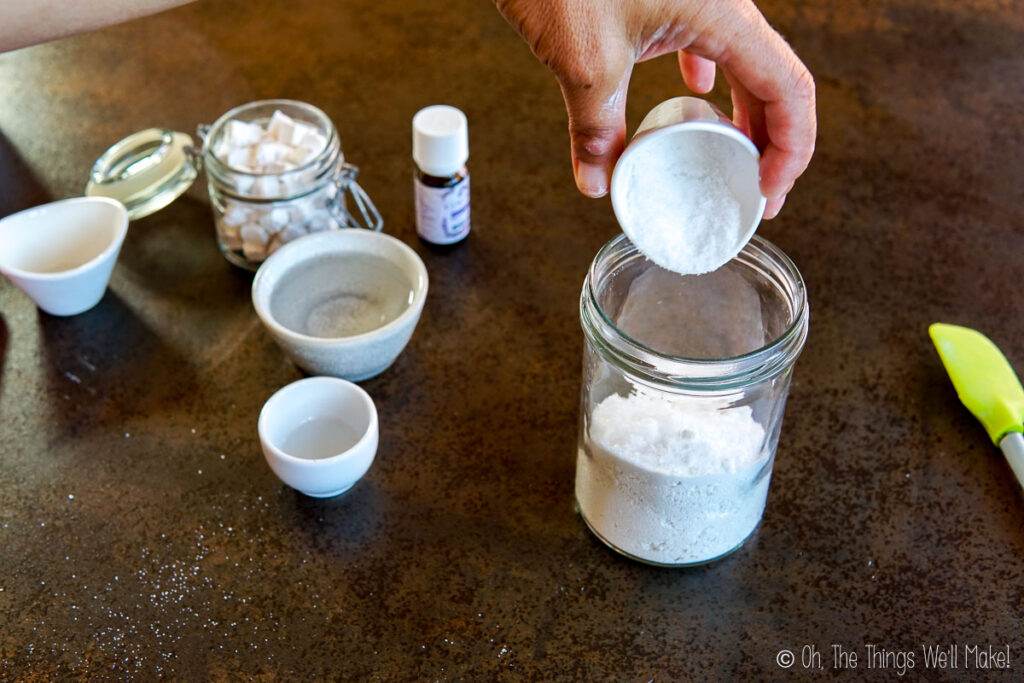
Mix dry ingredients. 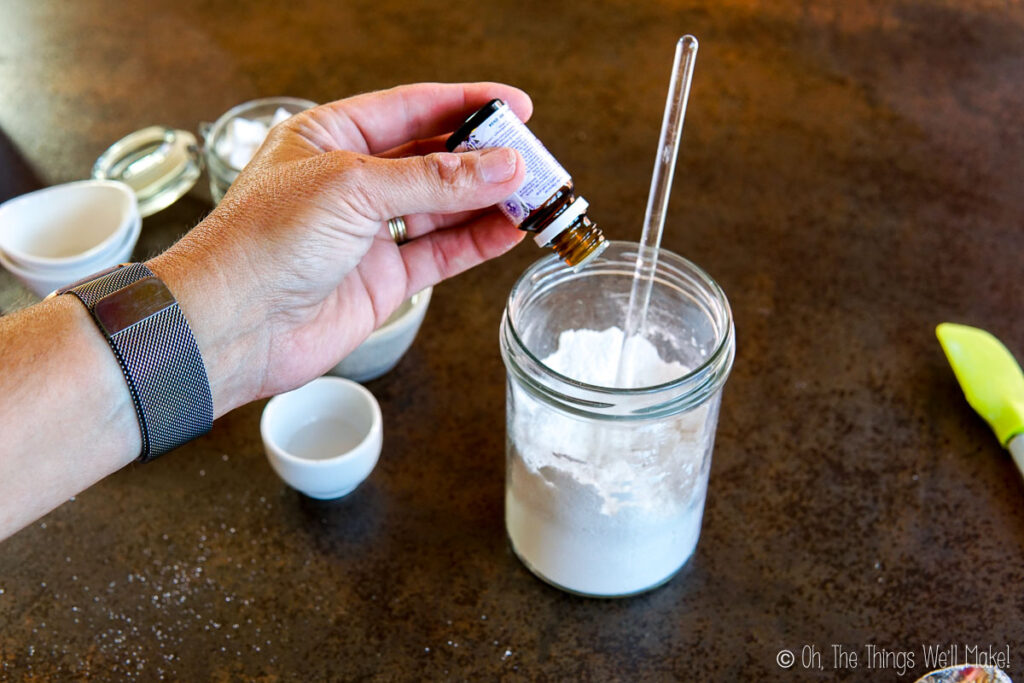
Add essential oil and surfactant. 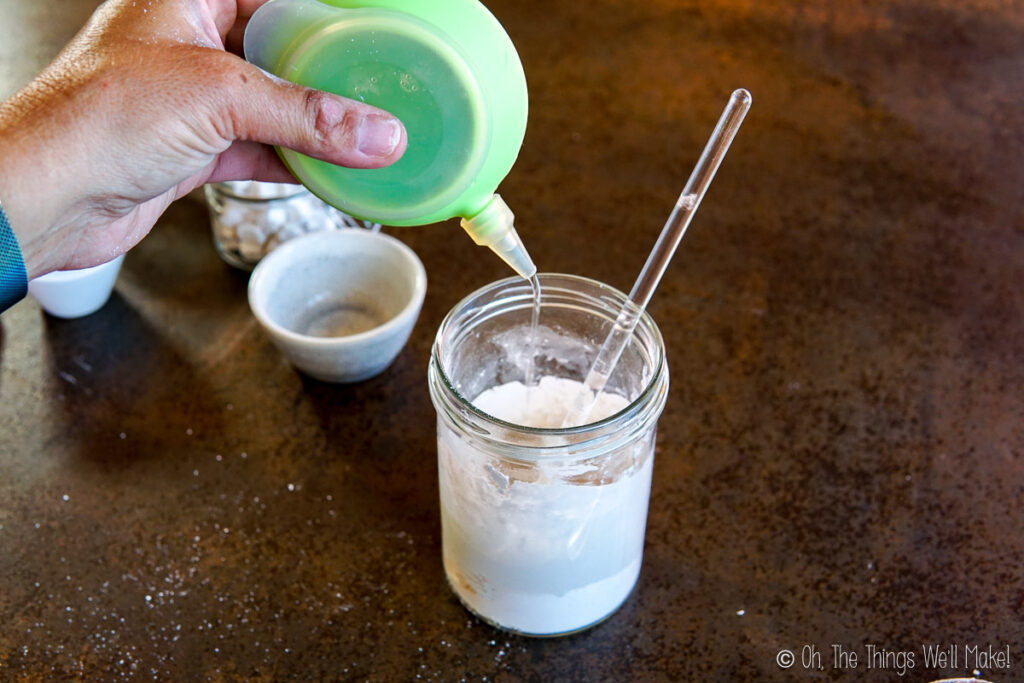
Add water to form a thick paste. 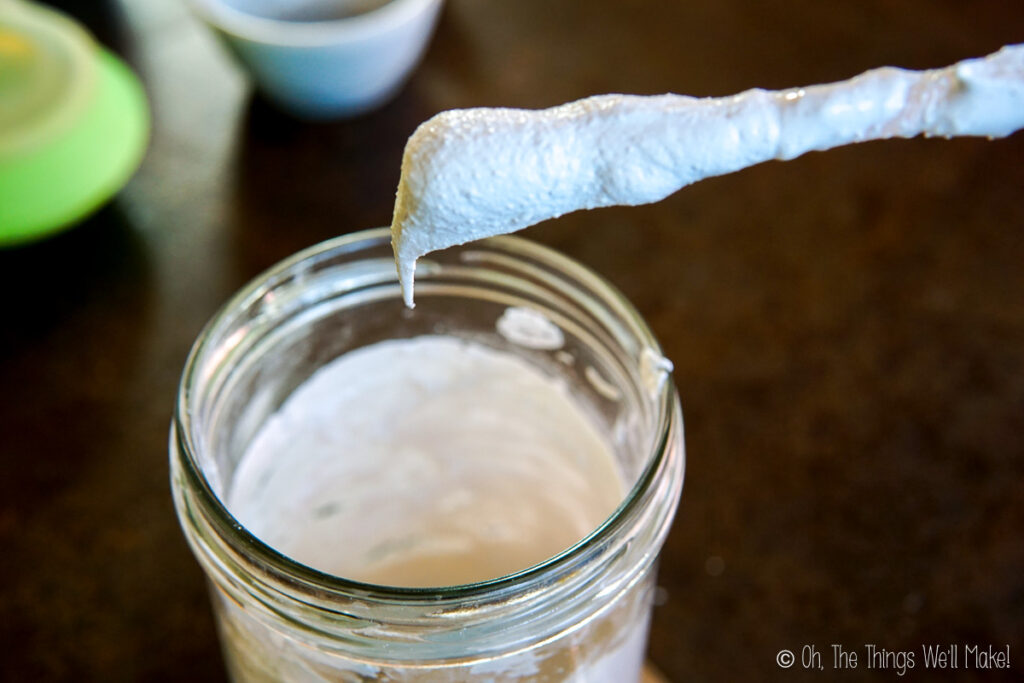
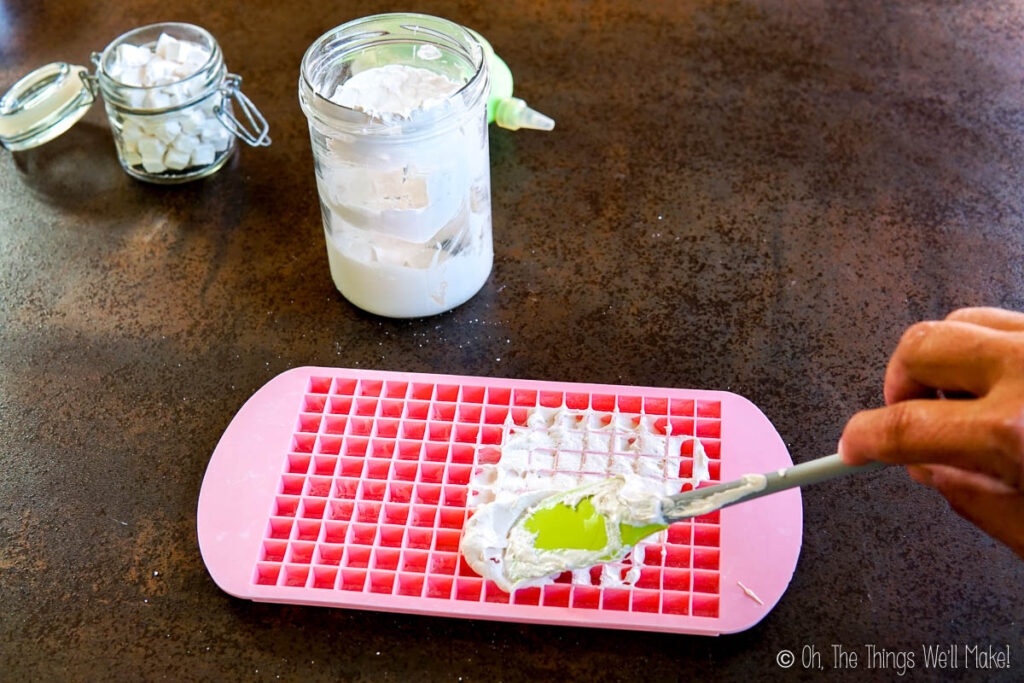
Spread into silicone mold. 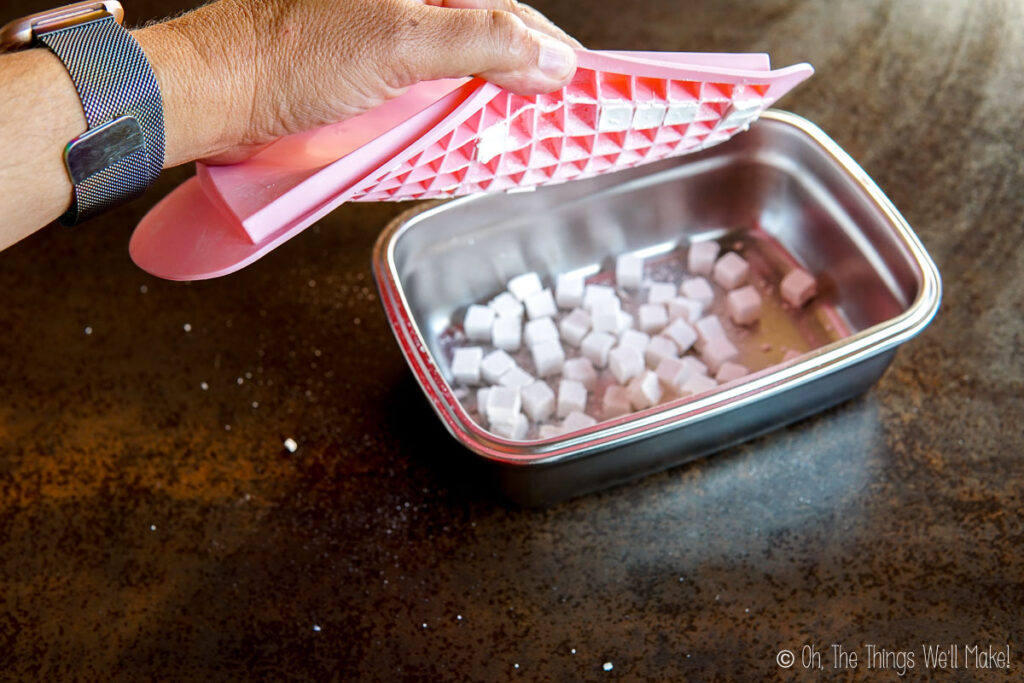
When dry, pop out of mold.
To make your own toothpaste tablets, simply weigh out all of your dry ingredients and stir them together. Little by little, add in filtered or distilled water until you achieve a thick paste.
Press the mixture into small silicone molds and let them dry. I brought mine out in the sun, covered with a net to protect it from insects. (I’m not sure if it’s really necessary as they didn’t seem to want to go near my peppermint mixture anyway!)
If you live in a cool, humid environment, you can speed up the drying process by placing the filled mold in an oven set to the lowest setting.
Once you notice they have dried enough to unmold them, pop the tablets out of the molds and store them in an airtight container.
How to use toothpaste tablets
Now that you have your tablets ready, you might be wondering how to use them! Simply put one tablet in your mouth, chew it up until it becomes paste-like, and brush your teeth as usual. You can use a regular or electric toothbrush. Brush in a circular motion, including the line between the teeth and gums. Don’t forget to brush your tongue too! When finished, spit out the excess.
Video
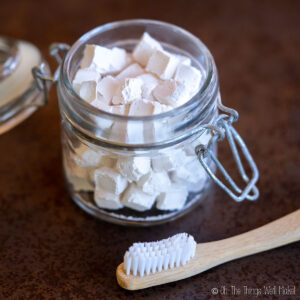
DIY Toothpaste Tablets
Equiment
Materials
- 50 g calcium carbonate
- 20 g baking soda
- 10 g xylitol
- 3 g surfactant I used sodium cocoyl glutamate.
- 5 drops essential oil options: peppermint, anise, clove, etc.
- 20 g water estimate
Instructions
- Weigh out all of the dry ingredients and mix them together.
- Add the essential oil and surfactant and stir until well incorporated.
- Little by little, add in filtered or distilled water until you achieve a thick paste.
- Press the mixture into small silicone molds and let them dry. (This can be done in the sun.)
- When dry, pop the tablets out of the molds.
- Store them in an airtight container.
To use toothpaste tablets
- Chew on a tablet then brush as usual.
Notes
Toothpaste FAQs
I purposely chose xylitol because it inhibits the cavity-causing bacteria that lead to tooth decay. Other sweeteners may not have those same beneficial properties and some may even feed the bacteria and help cause cavities.
Stevia itself is a natural product that doesn’t lead to tooth decay. That said, there are a variety of different products on the market like stevia drops and powders. These products have other ingredients that may cause issues.
Both activated charcoal and cocoa powder are generally safe to use in homemade toothpaste. Theobromine, found in cocoa powder, has actually been found to help with the remineralization of tooth enamel. Activated charcoal may help absorb toxins and impurities that can cause discoloration on teeth. That said, both are a dark color and may make a mess of your sink. While they may make your teeth look whiter at first, they may both eventually lead to a darkening of your teeth.
While I’ve seen it included in several online toothpaste recipes, please don’t add it! Diatomaceous earth has a Mohs scale hardness rating of 6 which is higher than that of hydroxyapatite, the main mineral component of tooth enamel (rating of 5). Before using any ingredient, make sure the hardness rating is lower than 5, or you risk abrading away tooth enamel. Also, make sure it won’t lower the pH of your mouth or contribute to the formation of plaque in some way.
I’ve received messages from some concerned readers about using essential oils for fear of disrupting the natural bacteria balance in the mouth. They worry that since essential oils have antibacterial properties, they may harm the good bacteria. I understand the fear, but essential oils, while they do have antibacterial properties, they aren’t as strong as you might think. Consider what happens when you make a homemade cosmetic with an essential oil. Unless you were using an extremely high dose, the essential oil won’t affect the shelf life of the product much. Microbes will quickly grow; that’s why you need a preservative. In the case of homemade toothpaste, only a few drops of essential oil are used to add flavor and freshness to the mouth. This isn’t enough to make any real impact.
Xylitol and baking soda also have antibacterial properties and yet are generally recommended as ideal for oral hygiene.
 Español
Español
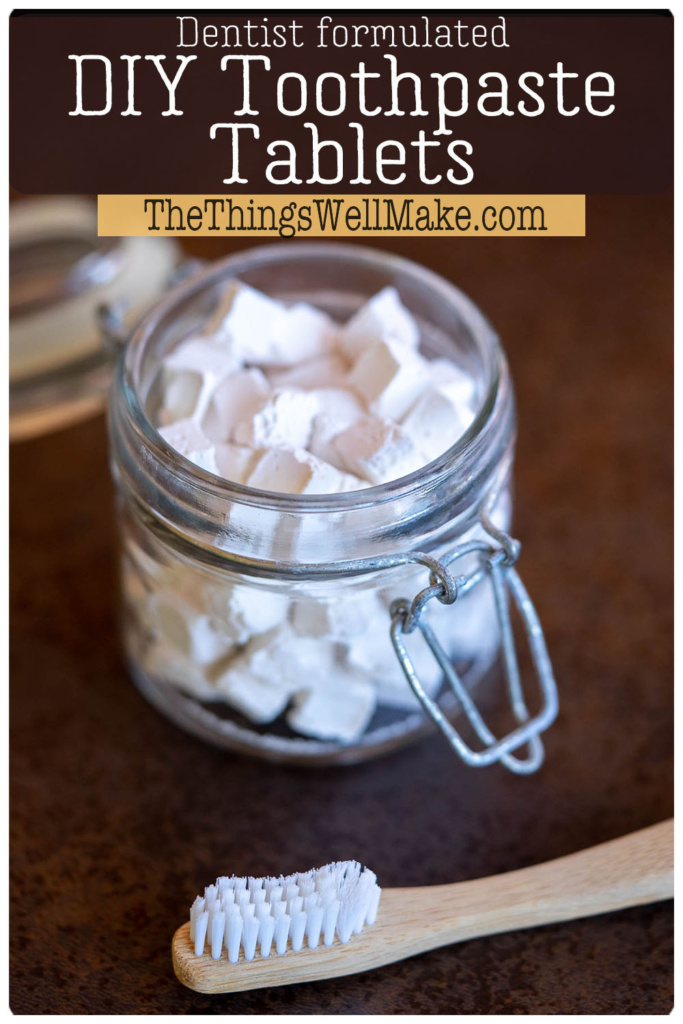
 Best Homemade Toothpaste Recipe: Dentist Formulated!
Best Homemade Toothpaste Recipe: Dentist Formulated!
Brenda L.
I’m having a difficult time sourcing sodium cocoyl glutamate. Can you tell me where you purchased it? Also, is it the powder or liquid form that is used in this recipe?
Tracy Ariza, DDS
Hi Brenda,
I live in Spain and bought it locally, so my sources probably aren’t very good for most people. (I’ve bought form several places, including Jabonarium and Planeta Huerto- for those who are in the area!) I actually bought both the powder and the liquid and tried both. Either works fine! If using the liquid, just make sure not to add too many other liquids so that the paste stays thick enough.
Nicole Frame
I have tried these and they are wonderful! Thank you so much for posting the recipe.
What do you call the plastic bottle you used for adding the water?
Tracy Ariza, DDS
Thanks, Nicole.
It’s actually made of silicone and it’s called the [eafl id="28176" name="Lekue decorating pen" text="Lekue deco pen"]. I find it really handy for lots of uses.